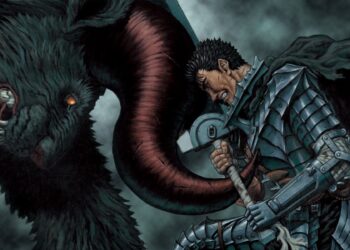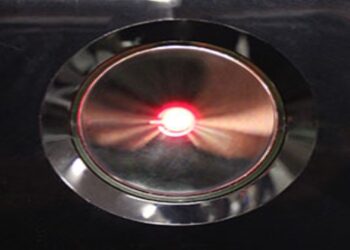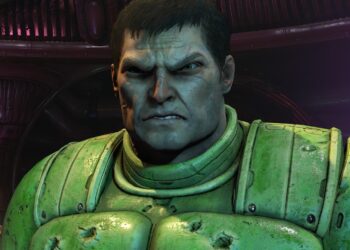Think You’ve Mastered Sekiro? Think Again, Wolf.
You’ve rung the Demon Bell. You parried Genichiro and faced Isshin. You feel skilled in Sekiro: Shadows Die Twice? Hold on, Ashina warrior. There are layers in FromSoftware’s masterpiece. Let’s explore skills, secrets, and lore veteran wolves might overlook. Learn or hesitate… and you know the outcome.
Master the Blade: Skills and Combat Arts
Combat in Sekiro requires blade mastery, posture, and timing. But are you reaching your potential? Let’s examine skills that distinguish the casual shinobi from true masters.
Strongest Skill in Sekiro? Posture, Plain and Simple.
The strongest skill isn’t a secret art scroll. It’s the mastery of posture. Breaking enemy posture leads to victory. Any skill that helps deplete enemy posture is invaluable. Focus on that white bar filling up, not just damage numbers.
Mikiri Counter: Your Thrusting Nemesis’s Worst Nightmare
Feeling overwhelmed by thrust attacks? The Mikiri Counter is your key. Unlock it early. Step into red kanji thrusts with a well-timed dodge. This deals posture damage and exposes enemies for follow-ups. Essential for early minibosses and many later foes.
Spiral Cloud Passage: Unlock Requirements and Why You Might Be Stuck
Dreaming of fast strikes with Spiral Cloud Passage? This Mushin Arts combat art requires prerequisites. First, gather 9 Skill Points. Next, unlock Floating Passage, Shadowrush, and Ashina Cross. They are prerequisites within the Mushin Arts tree. No Floating Passage? No Spiral Cloud Passage.
Best Combat Arts: Ranking the Steel Dances
Sekiro’s combat arts deliver unique moves, each with strengths. But which arts reign supreme? Personal preference matters, yet some arts consistently outperform others:
- Ichimonji: Double: Remember, posture reigns. This art delivers an overhead strike that shatters enemy posture and recovers your own. The double version amplifies its power against various foes.
- Shadowfall: Want a devastating attack? Shadowfall propels you towards an enemy for a powerful downward strike. Ideal for punishing openings.
- Mortal Draw: Want raw damage? Mortal Draw delivers, especially with the Mortal Blade. This slow, powerful strike consumes Spirit Emblems and chunks enemy health.
- High Monk: High Monk gives style points and practical utility. It’s effective for countering sweep attacks with leaping kicks.
- Whirlwind Slash: Fast attacks and crowd control characterize Whirlwind Slash. Useful to hit multiple enemies in specific situations.
- Nightjar Slash: Nightjar Slash shines in mobility and quick strikes, perfect for hit-and-run tactics.
- Senpou Leaping Kicks: These kicks excel in aerial combat. Stylish and effective against specific weak enemies.
- Floating Passage: Not top-tier alone, but it’s crucial for accessing Spiral Cloud Passage and applying ongoing pressure.
One Mind: Unleashing the Storm Within
One Mind sounds epic. It’s a Combat Art with rapid sheathed blade strikes, nearly invisible. It costs Spirit Emblems but delivers relentless attacks. The description tells it best: “Focus your soul on the blade’s release.” Such speed is valuable against Ashina soldiers.
Prosthetic Arts: Unlocking the Skill Tree for Your Shiny Arm
Your prosthetic arm serves a purpose. To unlock the Prosthetic Arts tree, obtain the Prosthetic Esoteric Text. How? Find at least 3 Shinobi Prosthetic Tools. Then speak with the Sculptor. He’ll grant the text, upgrading your arm from a tool to a deadly arsenal.
Unveiling the Secrets: Hidden Techniques
Beneath the skill trees, Sekiro hides deeper secrets, techniques learned through mastery.
The “Unknown Secret Technique” – Probably Mushin Arts, Wolf
Heard about an “unknown secret technique”? You’re likely referencing Mushin Arts. This advanced skill tree requires earning it through dedication, marking the peak of shinobi combat.
How to Unlock Mushin Arts: A Path of True Mastery
Unlocking Mushin Arts is a process, testing your progress. First, you need the Mushin Esoteric Text. Speak to Isshin Ashina after defeating Genichiro. He’ll guide you to the Mortal Blade. Learn the final Combat Art from any skill tree. Finally, visit the Great Serpent Shrine and meet Tengu (Isshin disguised). He will give you the Mushin Esoteric Text. Now you’re closer to shinobi power.
Sekiro’s Secret Area: Hirata Estate’s Hidden Door
Think you’ve explored Ashina? Think again. Hirata Estate has a secret area. After defeating Juzou, return to the Hirata Audience Chamber Sculptor’s Idol. Go where Juzou fell, turn right along the patrol path. Spot the scroll hanging on the wall. That’s your hidden door. Smash it open for new exploration.
Lore Deep Dive: Characters and Their Secrets
Sekiro offers more than combat; it features lore and intriguing characters. Let’s unravel their secrets.
Why Does Isshin Call You Sekiro? More Than Just “One-Armed Wolf”
Isshin Ashina calls you “Sekiro.” Wonder why? It’s not a casual nickname. “Sekiro” (隻狼) means “one-armed wolf.” “Seki” (隻) means “one of a pair.” “Rō” (狼) signifies “wolf.” It clearly reflects your lost limb and ferocity. This name encapsulates your essence as a shinobi.
“Sekiro” Meaning: The One-Armed Wolf Explained
Breaking down the name further. “Seki” (隻) means one. “Ro” (狼) means wolf. Together, they form Sekiro, the One-Armed Wolf. Born from physicality and spirit, the name captures your identity.
Who Gives You the Name Sekiro? The Tengu and the Sculptor’s Influence
Who named you Sekiro? Isshin Ashina, as Tengu of Ashina. The story has depth. Remember the Sculptor? He saved Wolf after defeat. When Wolf attacks Ashina Castle for Kuro, he meets Isshin (as Tengu). Isshin observingly gives him the name based on his one arm and wolf-like tenacity.
name “Sekiro.” It combines Isshin’s insight and the Sculptor’s gift.
The Masked Man: Unmasking the Tengu of Ashina
The mysterious Tengu of Ashina hunts “rats” and rewards shinobi with texts. Who is this figure? Spoiler: it’s Lord Isshin Ashina. The old man gets around, doesn’t he?
Isshin Ashina’s Quests and Role: More Than Just a Final Boss
Isshin, as Tengu, gives quests! He asks you to eliminate “rats” (Ashina Assassins). He provides the Rat Description to help identify them. Completing these quests earns rewards, including the Ashina Esoteric Text and, later, the Mushin Esoteric Text. Isshin’s role is multifaceted. He’s a powerful warrior, a quest giver, and a formidable final boss (or two, depending on your ending).
Isshin in Bleach? Wrong Universe, Wolf.
Wait, why is “Why no one remembers Isshin in Bleach” in our notes? Wrong Isshin. We’re discussing Sekiro, not Soul Reapers. Let’s keep it to the Ashina Clan.
Genichiro Ashina: The True Villain? A Complex Antagonist
Genichiro Ashina, grandson of Isshin, is often seen as the main antagonist. He is the persistent thorn in your side. A leading member of the Ashina Clan, Genichiro protects his land. He’s driven by fierce loyalty, doing anything to achieve that, even dabbling in forbidden arts. “Villain” is too simple. He fights for home but through questionable means.
Owl’s Motivations: Ambition and Cruelty, Pure and Simple
Then there’s Owl, your adoptive father. While Genichiro shows shades of gray, Owl operates purely in darkness. He is a rogue shinobi, driven by ambition. Cunning and ruthlessly manipulative, he sacrifices anyone for his goals. Unlike Genichiro’s loyalty, Owl’s motivations are purely selfish. He’d sell you out for a better sword.
Kuro, the Divine Heir: God in Sekiro? The Source of Power
Who is “God” in Sekiro? Not in a typical sense. Kuro, the Divine Heir, holds immense power: the Dragon’s Heritage. He’s the key to immortality, central to conflict. Not a god in the pantheon, Kuro’s bloodline makes him a figure of immense importance, sought for his power.
Why “Sekiro” Again? Repetition for Emphasis, Wolf.
Back to the name “Sekiro.” “Sekiro” (隻狼) comes from “sekiwan” (隻腕 – one-armed) and “ro” (狼 – wolf). The Tengu of Ashina gives this name because you, the Wolf, refuse to reveal your true name. It’s a fitting moniker, synonymous with the one-armed shinobi.
Facing the Gauntlet: Bosses and Enemies Secrets
Sekiro’s bosses and enemies are famous for difficulty. Knowing secrets turns battles.
Hardest Enemy in Sekiro: Demon of Hatred vs. Isshin, the Sword Saint – A Matter of Style
Who’s the hardest enemy in Sekiro? It’s debated. Many point to the Demon of Hatred, a colossal beast. His health pool and fiery attacks can confuse players. Then there’s Isshin, the Sword Saint. He’s the final boss for most endings. Isshin tests your mastery of all Sekiro skills. Ultimately, “hardest” is subjective. Demon of Hatred may challenge players focused on combat, while Isshin tests overall mastery.
Secret Final Boss: Isshin, the Sword Saint – The True Climax
Is there a secret final boss? Yes, sort of. After defeating Genichiro in the last encounter, he transforms into Isshin, the Sword Saint. *This* Isshin is the true final boss for most endings. He has three posture bars and multiple phases. Genichiro was the appetizer; Isshin is the main course, a Michelin-rated beatdown.
Isshin: Rat Killer by Day, Sword Saint by… Also Day?
Is Isshin the rat killer? Yes! Remember Tengu quests to eliminate “rats”? That’s Isshin in disguise again. He actively cleans up Ashina’s problems, even if it means dressing up in a mask.
Hanbei the Undying: Your Immortal Training Dummy and Manga Star
Hanbei the Undying is your friendly training partner. He can take a sword hit and just dust himself off. Unkillable, he’s great for practice. But there’s more to Hanbei than it seems. In the “Sekiro Side Story: Hanbei the Undying” manga, we learn his backstory. He was a soldier of General Tamura who became immortal after being killed by Isshin Ashina. A monk dropped a centipede on his body. Immortality with a giant bug – classic FromSoftware.
Demon of Hatred: Optional Fiery Fury
The Demon of Hatred is optional. You don’t have to fight him to win the game. But if you’re a completionist or enjoy suffering, then face this optional wall of fire.
Juzou the Drunkard: The Fat Boss with Poison Breath (and Annoying Minions)
Who’s the fat boss? That’s Juzou the Drunkard. He’s a shirtless brute wielding a large blade. An early challenge, known for poison breath and powerful attacks. His entourage of minions is annoying. Dealing with Juzou requires crowd control and facing him directly. Take out his henchmen first or risk being overwhelmed.
The Little Hat Guys: Assassins in Disguise (and Annoyingly Agile)
Those little hat guys? They’re Assassins, or “rappa” (らっぱ, Spy) in Japanese. Don’t underestimate them due to size. These agile enemies are quick and often ambush you. Their straw hats may look silly, but they effectively conceal movements. Stay alert; these little guys can hit hard.
Decoding the System: Game Mechanics Secrets
Sekiro’s mechanics are intricate and rewarding to master. Let’s decode fine points.
Resurrection Availability: Pink Circles – Your Second Chance (with a Cooldown)
The pink circles at the bottom left show resurrection availability. When one circle is full, you can resurrect after death. Think of them as extra lives. The circles refill over time like a pie chart; killing enemies speeds this up. However, there’s a cooldown after resurrection, so use resurrections wisely.
Red Symbols: Perilous Attacks – Unblockable and Unforgiving
Red kanji symbols mean Perilous attacks! These attacks cannot be blocked. Adapt to them. Sweeping perilous attacks? Jump over them. Thrust perilous attacks? Mikiri Counter them. Grapple perilous? Grapple away! Each type has a specific counter. Learn them for survival.
Finger Whistle: Enemy Aggregation and Tactical Distraction
The Finger Whistle is deceptively versatile. Its main function is to aggro enemies. Use it to draw foes to a spot for stealthy takedown or combat art. Think of it as your call for unsuspecting guards.
Bell Demon: Sinister Burden for Increased Rewards (and Pain)
Ringing the Bell Demon invites “Sinister Burden.” It increases enemy damage and difficulty but can yield better rewards. Don’t expect a flood of experience or sen; this modifier mainly increases item drop quality, not quantity. For those who crave extra challenges and better loot.
Sakura Droplet: Resurrective Power Boost
The Sakura Droplet is key. Dropped by Genichiro, give it to Kuro at Ashina Castle’s top for an additional Resurrective Power node.
Pink circles bring more second chances. Definitely worth the trip.
Consequences of Dying: Skill Point Progress Halved – Learn from Your Mistakes (or Lose Progress)
Dying in Sekiro hurts. It halves the progress to your next skill point. Ouch. This punishment emphasizes learning. Play cautiously. Each death sets you back. Make every life count. Try to value each resurrection.
Giving Sake to Isshin, Sculptor, Emma: Lore in a Bottle
Unrefined Sake is more than a drink. Give it to the Sculptor, Emma, or Isshin Ashina. They unlock lore-rich dialogues. Learn their pasts and Ashina’s history. Discover deep connections. It’s like getting story tidbits with a sip of virtual booze.
Navigating the World: Areas and Progression Secrets
Ashina is vast and interconnected. Let’s find some area and progression secrets.
Secret Passage Out of Ashina Castle: The Moat Escape Route
Need to sneak out? There’s a secret passage. It lies at the moat’s end in Ashina Reservoir, near Moon-view Tower’s Idol. Kuro uses this route to escape. Follow him for a quick getaway or to explore other areas.
Best Enemy to Farm for Skill Points: Straw Hat Goons at Ashina Castle Gate
Want skill points? Go to Ashina Castle Gate Idol after defeating the general. This area contains humans and short straw hat goons. Focus on the straw hats. They give good experience. Dispatch them for efficient skill point farming. Don’t get too bored.
Hardest Area in Sekiro: Endgame Ashina Castle and Outskirts – The Final Gauntlet
Hardest area? Many say it’s endgame Ashina Castle and Outskirts. By now, enemy density is high and minibosses tougher. You face some of the most challenging main bosses. It’s a final gauntlet, testing your skills. Be ready for a brutal climb.
Reaching Lady Butterfly: Hidden Temple Key in Hirata Estate
Want to fight Lady Butterfly? You’ll need the Hidden Temple Key. Missed it? No worries! Go to the Bamboo Thicket Slope in Hirata Estate, past the Shinobi Hunter miniboss. Follow the path and bridge to find a dying character who gives you the key. Unlock Lady Butterfly’s temple.
Reaching the Conclusion: Endings and Completion Secrets
Sekiro has multiple endings with their own nuances. Let’s explore paths to completion.
How Many Endings? Four Paths to Different Destinies
Sekiro has four endings. Four! To achieve 100% completion, see them all. Each ending offers a different conclusion to Sekiro and Kuro’s journey, reflecting your choices and actions.
100% Sekiro? Save File Shenanigans Required (Mostly)
Can you 100% Sekiro? Yes, but traditionally you need four playthroughs. There is a time-saving trick. Backup your save before the final boss choice. Reload it to see different endings without replaying the entire game. Efficiency matters, Wolf.
Secret Ending: The “Return” Ending – A Journey Westward
Secret ending? Yes, the “Return” ending is considered the fourth secret ending. In this, Kuro doesn’t die during the Severance ritual. His soul lives on in the Divine Child. She decides to journey West to return the Dragon’s Heritage. Wolf accompanies her and Kuro’s soul, bringing hope and closure.
Killing Isshin: The End of the Line (Almost)
Killing Isshin ends the game. Defeat Isshin Ashina in the Shura ending or Isshin, the Sword Saint in others. The credits will roll after. You will be asked about starting New Game Cycle. Killing him signals the end of your playthrough.
Sekiro Completion Rate: A Testament to Its Difficulty (or Player Perseverance)
What percentage of people finish Sekiro? The “Sword Saint, Isshin Ashina” trophy indicates a completion rate of about 27.7%. That means a quarter of players see it through to the end. This reflects its difficulty or player perseverance.
Missable Content: Act Before the Divine Dragon
Is anything missable? Yes, after defeating the Divine Dragon, many side quests become unavailable. This includes questlines with Kuro, Emma, and the Sculptor, linked to alternate endings like Purification and Return. Get Father’s Bell Charm before proceeding, or miss Hirata Estate Part 2.
Understanding the Protagonist: Wolf’s Secrets
Who is Wolf, really? Let’s explore his nature.
Is Wolf a Shura? The Potential for Demonic Transformation
Is Wolf destined for Shura? Both Isshin and Emma recognize Wolf’s potential during Sekiro’s events. Shura is born from bloodshed and abandoning one’s purpose. His past as a shinobi and loyalty to Kuro make him vulnerable. The Shura ending shows what happens when he succumbs.










